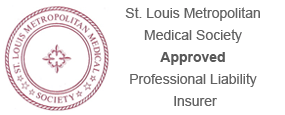The doctrine of informed consent is well known to healthcare practices, and most have well established policies and procedures for the physician to obtain informed consent. Informed consent is defined as: a patient’s knowing choice about treatment or a procedure, made after a physician or other healthcare provider discloses whatever information a reasonably prudent provider in the medical community would provide to a patient regarding the risks involved in the proposed treatment. Black’s Law Dictionary (7th edition, 1999). This discussion should include treatment options, risks, benefits, costs, and realistic expectations of potential outcomes. The discussion also should explain the consequence of failing to accept the recommended treatment. The discussion should be clear and concise, and in terms that the patient can understand, and then documented in the medical records and by the patient’s acknowledgement on an informed consent form. This should now be customary practice for all healthcare providers.
A component of the informed consent process with the patient is that the patient may elect to withhold their consent to treatment, and forego treatment, otherwise known as informed refusal. The law has long recognized the right of a patient to autonomy and self determination as to medical and surgical treatment even when the refusal could lead to severe detriment to the patient’s health, or even death. There is an evolving trend towards increased patient autonomy and patient involvement and participation in the decision-making process. A vast majority of patients now believe or have been taught to question every decision or process. They have concerns about medications and the pharmaceutical industry. Those patients now use the internet as their primary source of information. We now live in an age where there are “apps” for numerous medical issues, and information regarding medical conditions is readily available online. The accuracy of these sources is frequently debatable. Often patients are mis-lead to think they have a certain ailment or condition. This creates situations where the patient has self-diagnosed or will question the physician diagnosis, choice of treatment, or choice of drug. Patients may have other reasons why they are reluctant to agree to a treatment such as cost, misunderstandings, fears, cultural or religious beliefs, or misconceptions about the diagnosis or treatment options.
Whenever a patient is refusing to undergo the recommended procedure, test, treatment, or refusing to take medication, it is imperative to document the patient’s reasons for refusal as well as have a further discussion of the consequences of the refusal. The dialogue about the informed refusal should be an extension of the dialogue regarding informed consent. This dialogue should attempt to determine the basis of the decision to withhold consent. Is this decision based upon information received from an outside source (most often the internet or discussions with family or friends) and does this create a misunderstanding for the patient. The patient can be provided with additional information to resolve the misunderstanding, or additional sources to allow for a better understanding. If the cause of withholding consent is based on financial issues, then document attempts to provide options to alleviate those concerns. If the concerns or cultural or religious, inquire about the reasons the patient believes they must withhold consent and if other alternatives were presented, if they would then consent. Provide any additional educational materials that may be available or encourage the patient to research from sources that you consider reliable. Provide information to the patient in form and manner to which they can comprehend. Encourage the patient to take their time with the decision, digest all the issues, do their research, and continue the discussion. Also encourage the patient to seek a second opinion. This should all be well documented in the medical record and ultimately, if the patient continues to withhold consent, have them sign a refusal to consent form.
A refusal to consent form should acknowledge that the patient is entitled to exercise freedom of choice by choosing not to undergo the recommended treatment, that they acknowledge that the particular treatment has been recommended. The form should contain at a minimum the following: that the risk and benefits have been fully explained and that the patient fully and completely understands those risks and benefits (include in the form the particular risks and benefits as would be found in the informed consent) and other options, that the risks, potential outcomes, and consequences of the refusal have been fully explained and that the patient understands and comprehends those risks (the information about the risks and consequences should be contained clearly on the form), and that all questions of the patient have been answered fully and completely. The form should clearly state that the patient has considered nature, purpose, benefits, risks, alternatives to the recommended treatment in addition to the risks and consequences of declining the treatment and that the patient has elected not to undergo the treatment. The patient and a witness should sign this form. The healthcare provider or physician sign and certify that they have provided all information about the nature, purpose, risks, benefits, and alternatives, along with the risks and consequences and potential outcomes of refusing to proceed with treatment. The healthcare provider should also verify that they allowed the patient to ask questions and have answered all questions fully and completely. As with any informed consent document, the refusal to consent document should be made a part of the medical record.

